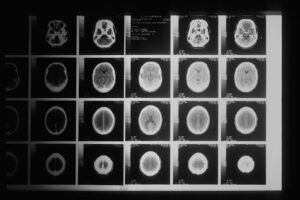Brain Tumor Risk: Unraveling the Link with Radon and Particulate Pollution
Introduction:
Brain tumors are a complex and concerning health issue worldwide, but the reasons for their varying incidence rates remain unclear. Some studies have explored the connection between exposure to radon gas and tumor incidence, but the results have been inconclusive. Additionally, there is evidence that particulate pollution could play a role in increasing tumor risk. Particulates might disrupt the blood-brain barrier, potentially allowing harmful radon to reach the brain. In this article, we explore a recent study by Joshua D Palmer and team from The Ohio State University Comprehensive Cancer Center, Columbus, Ohio, USA. investigating the relationship between residential radon exposure, particulate pollution, and brain tumor incidence in the United States.
The Study Design
Researchers gathered data on median radon testing results and annual air quality index values at the county level. They divided the data into four groups based on radon and particulate pollution levels: high particulate/high radon, high particulate/low radon, low particulate/high radon, and low particulate/low radon. Incidence rates of brain tumors were calculated using data from the Central Brain Tumor Registry of the US. The researchers adjusted the rates for age and behavior and used statistical methods to examine significant differences and possible confounding factors.
Findings:
The study covered around 83% of the US population. Counties with both radon and particulate data showed interesting trends. The high particulate/high radon group was significantly associated with an increased incidence of all non-malignant brain tumors. In some cases, the risk was up to 26% higher, including for tumors like meningiomas. Importantly, this increased risk persisted even after accounting for potential confounding factors.
For malignant brain tumors, including the aggressive glioblastoma, the association with high particulate/high radon exposure showed an increased risk of up to 10%. However, this risk diminished when demographic and socioeconomic differences were taken into consideration.
Conclusion:
This study is the first to suggest a potential link between increased incidence of non-malignant brain tumors and exposure to high levels of both radon and particulate pollution. These findings offer valuable insights into the factors contributing to the variation in brain tumor incidence rates. However, it’s essential to conduct further studies to validate these results in other populations.
Implications:
Understanding the factors that contribute to brain tumor development is crucial for public health efforts. If the link between high radon and particulate pollution exposure and brain tumor risk is confirmed, it could lead to better preventive strategies. Additionally, the study highlights the importance of monitoring and controlling residential radon levels and particulate pollution to safeguard public health.
Limitations of the study:
While this study provides valuable information, it has some limitations. The data covered only certain counties, and more research is needed to represent the entire US population accurately. Moreover, the study focused on associations and does not establish causation between radon, particulate pollution, and brain tumors.
In Conclusion:
Brain tumors pose a significant health challenge worldwide, and their incidence rates vary without a clear explanation. This recent study sheds light on the potential relationship between brain tumor risk, residential radon exposure, and particulate pollution. The findings suggest that regions with high levels of both radon and particulate pollution may have an increased risk of non-malignant brain tumors. However, more research is needed to confirm and understand these associations fully. As we continue to explore the impact of environmental factors on health, this study opens up new avenues for preventive strategies and public health interventions to reduce brain tumor risk and protect the well-being of communities across the country.
Reference
https://pubmed.ncbi.nlm.nih.gov/35762336/
Photo by Nik Shuliahin 💛💙 on Unsplash







